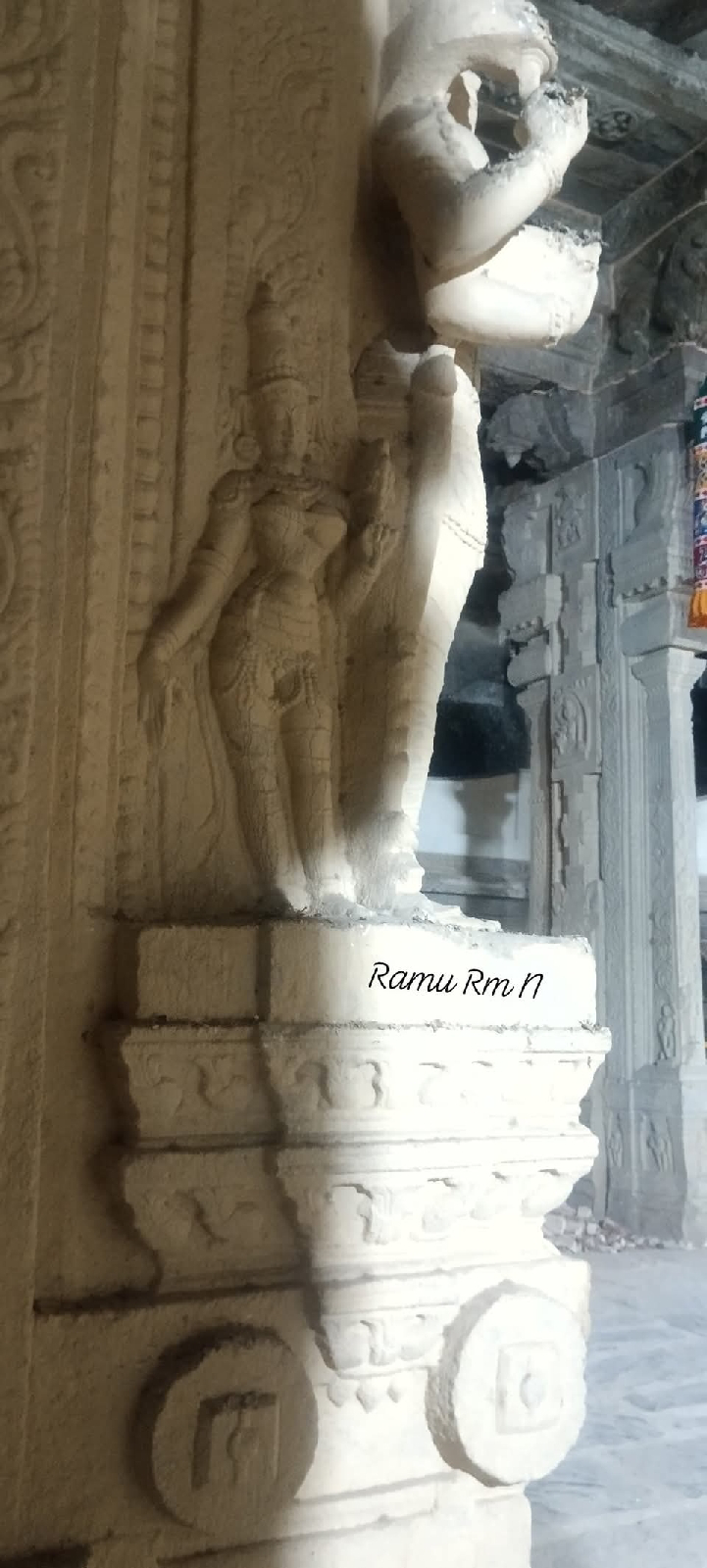The deity is placed on a raised pedestal, He is shown with four arms, a typical feature in South Indian temple iconography. The upper hands hold water lilies, which symbolize coolness, reflection, and the nourishing nature of the moon. His lower right hand is in abhaya mudra, offering protection and peace, while the lower left hand is in Varada Hastam is a gesture of boon-giving, compassion, and generosity. It symbolizes the bestowal of blessings, such as wealth, wisdom, or spiritual progress.
Behind his head is a large circular halo, representing the moon's soft glow and his divine presence. He wears a jata-makuta, a crown made of matted hair, along with ornaments like necklaces, armlets, and a decorated waistbelt. These details emphasize both his ascetic and royal qualities.The sculpture also includes his consorts, Rohini and krithika on either side of him. This is a common feature in depictions of Chandran on temple pillars and highlights his nurturing and emotional nature. While his chariot is not shown in full detail, symbols like the crescent moon or a lotus base are often used to suggest his gentle, floating movement across the night sky.Like Surya, Chandran’s sculpture is placed on mandapa pillars to act as an auspicious presence and a cosmic witness.
The smooth carving, gentle expression, and refined ornamentation reflect the high level of craftsmanship of the Nayaka period. Chandran stands as a reminder of calmness, rhythm, and emotional clarity, offering balance to the power of Surya in the sacred temple space.
-- Ramu Rm N






